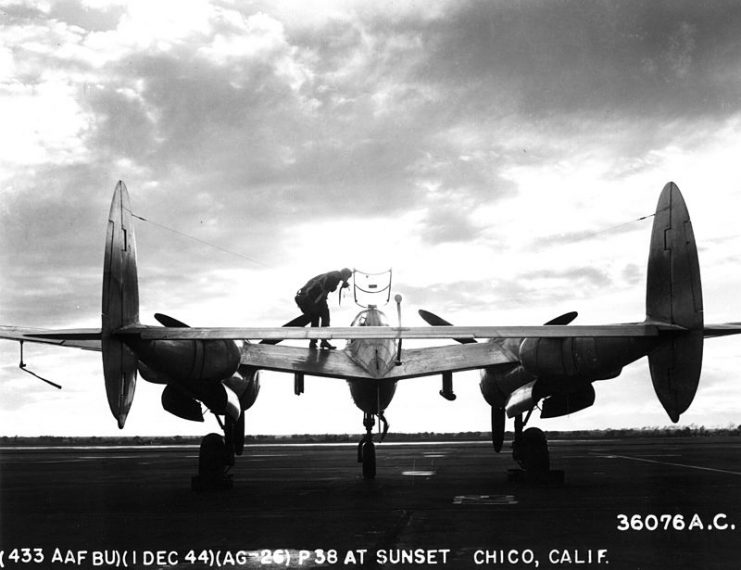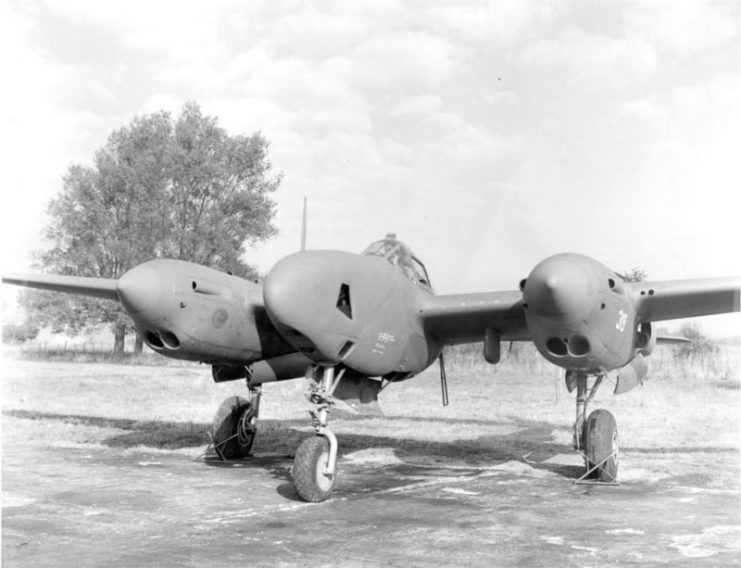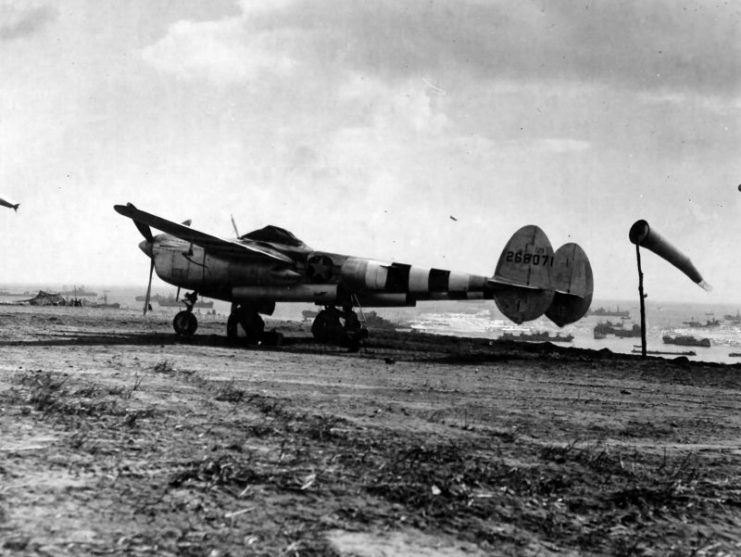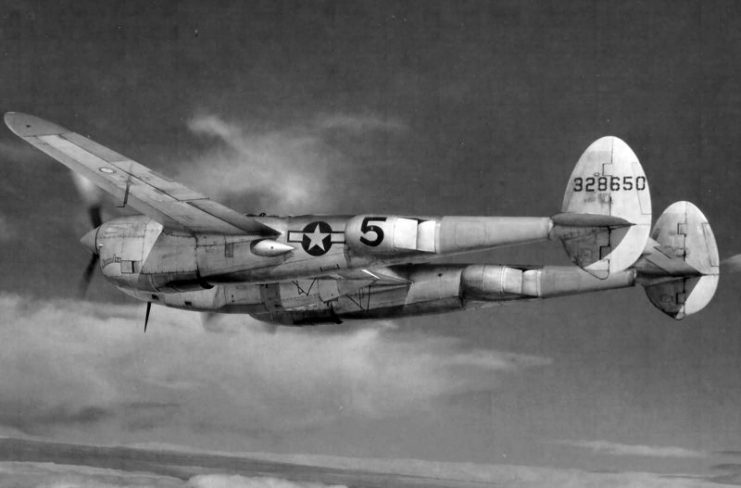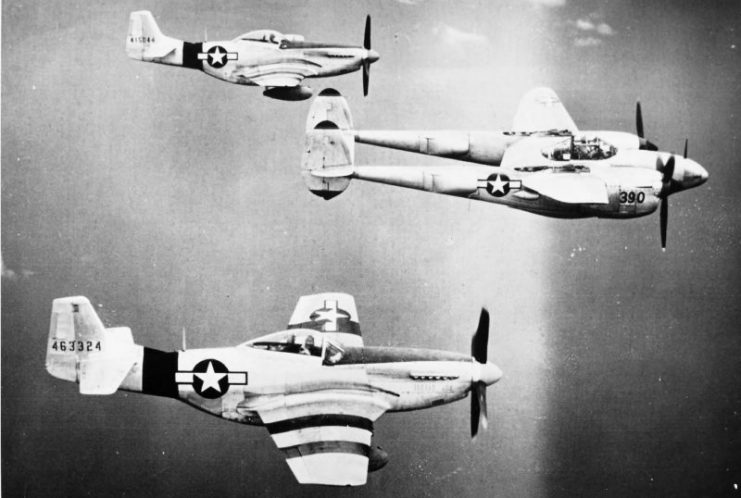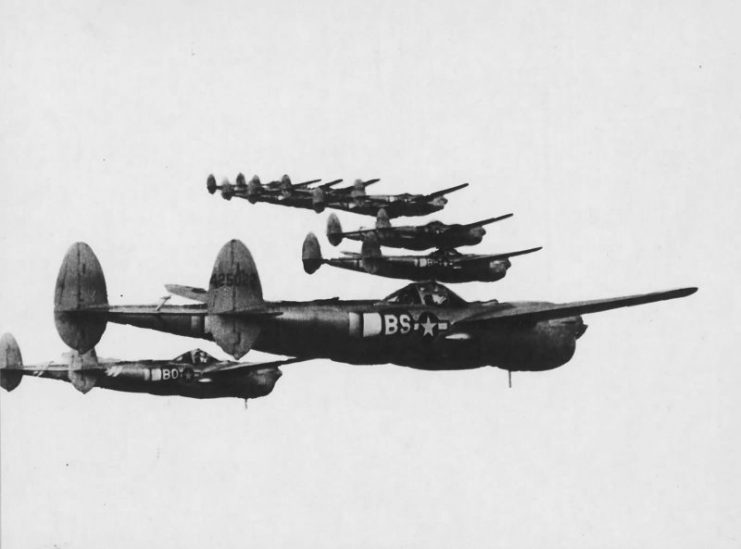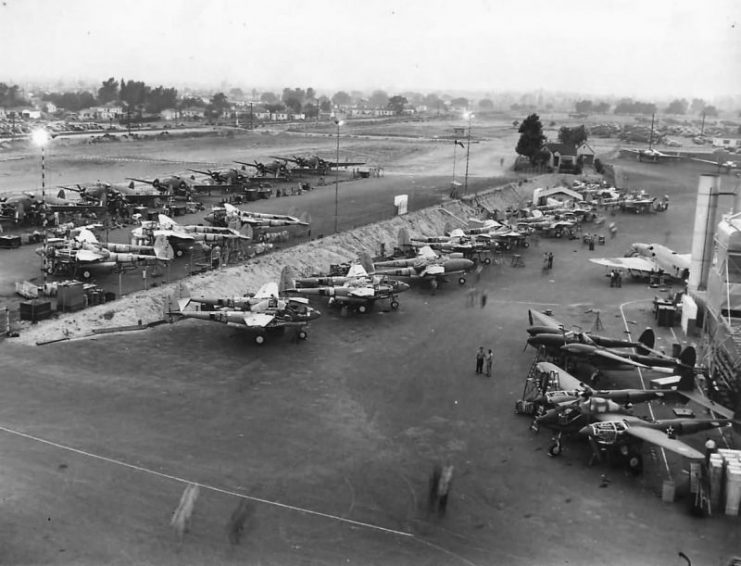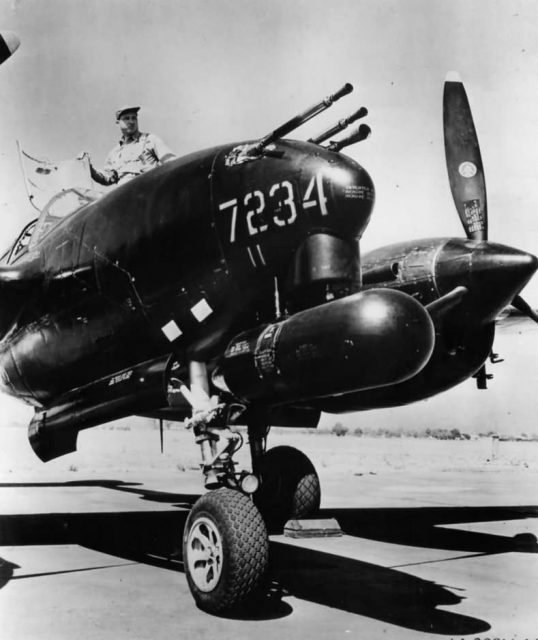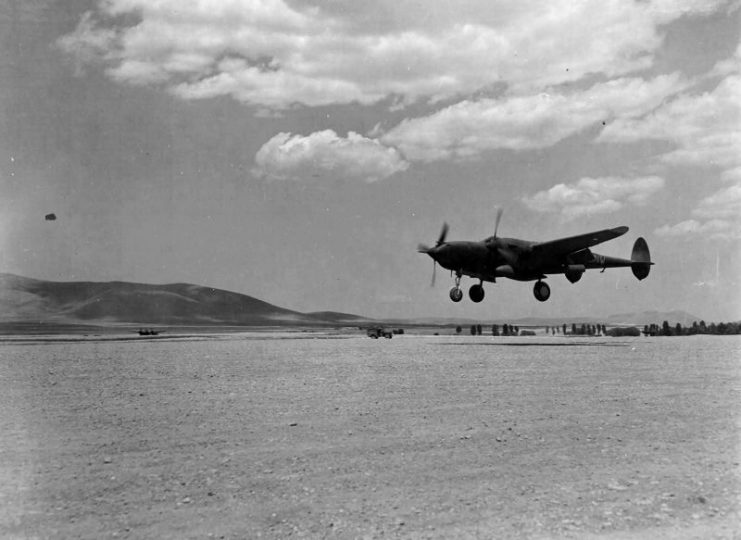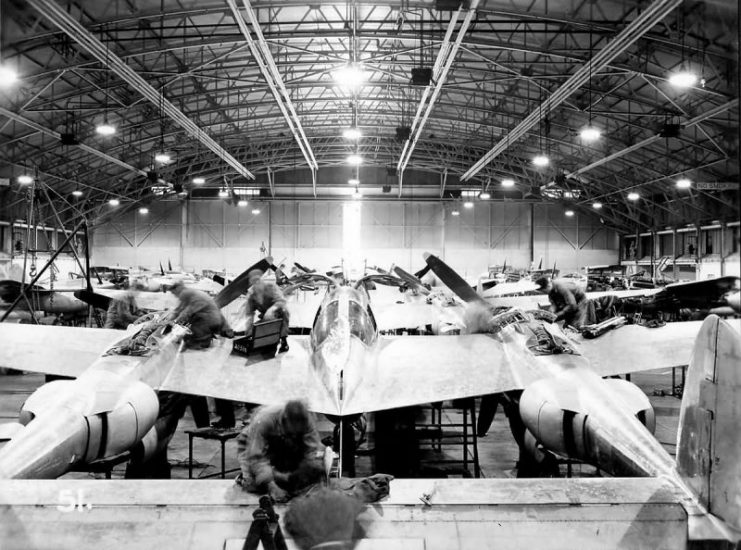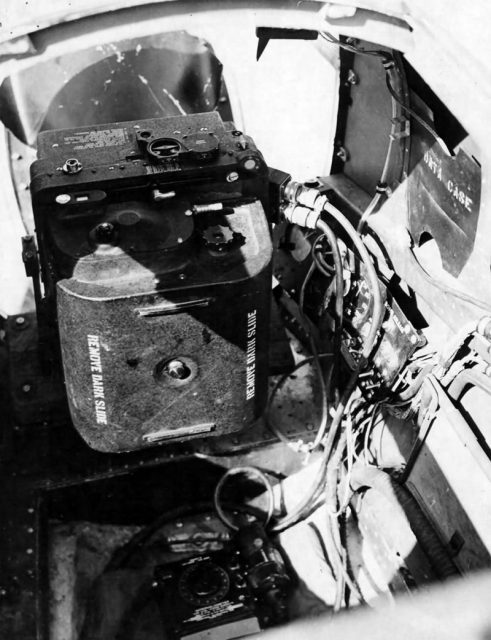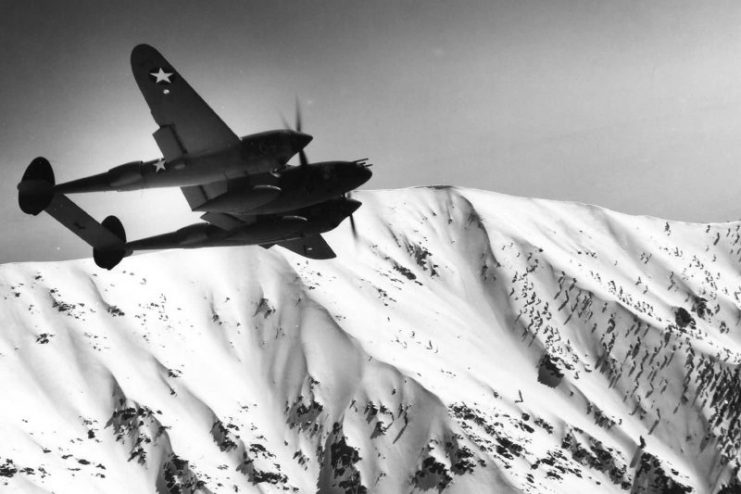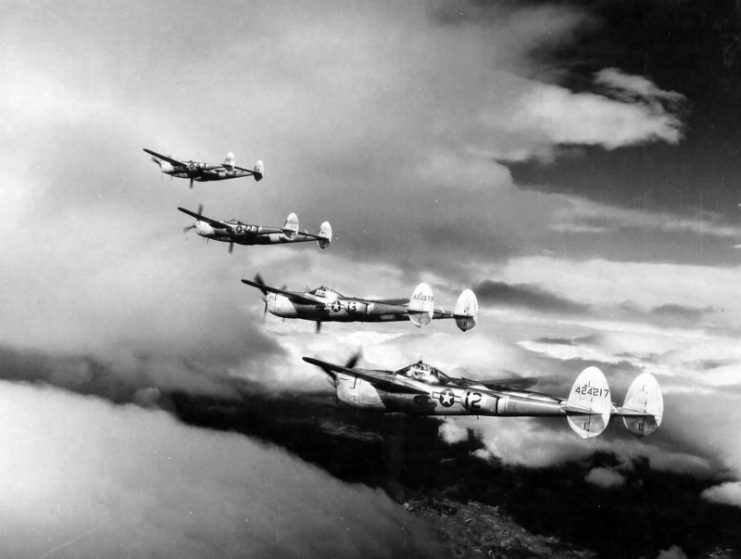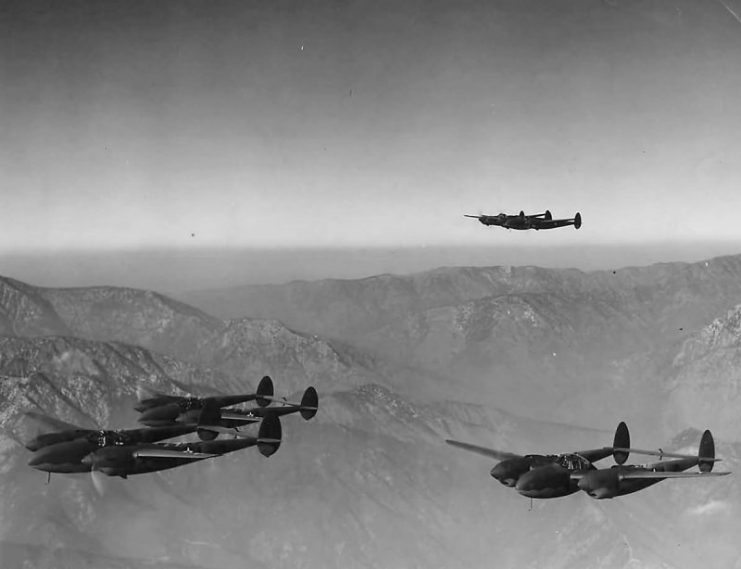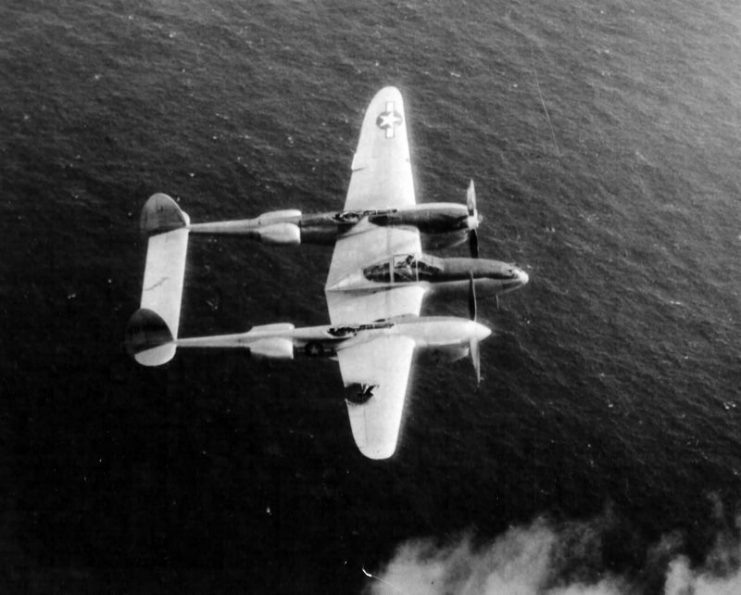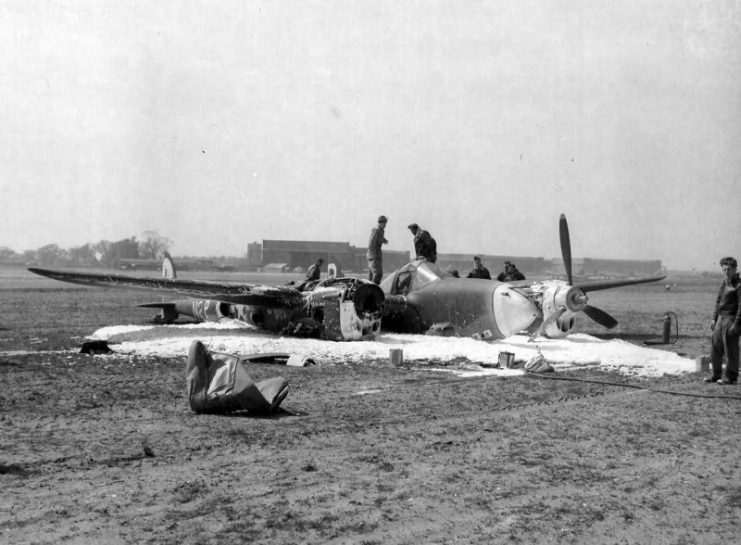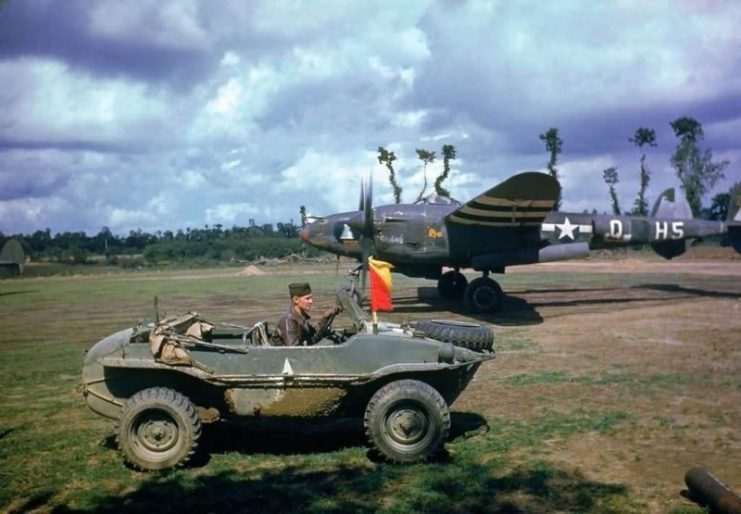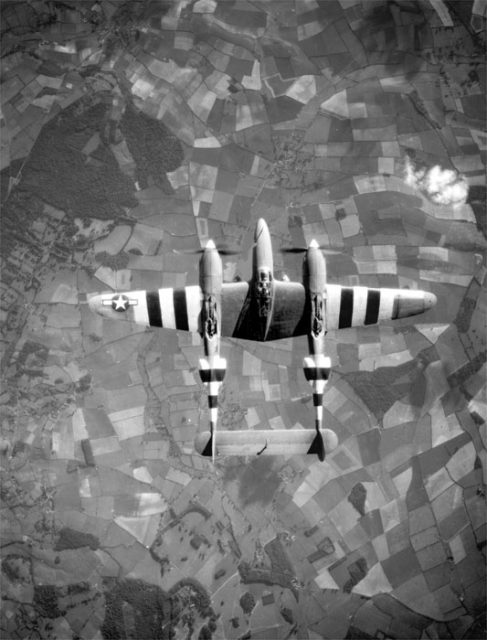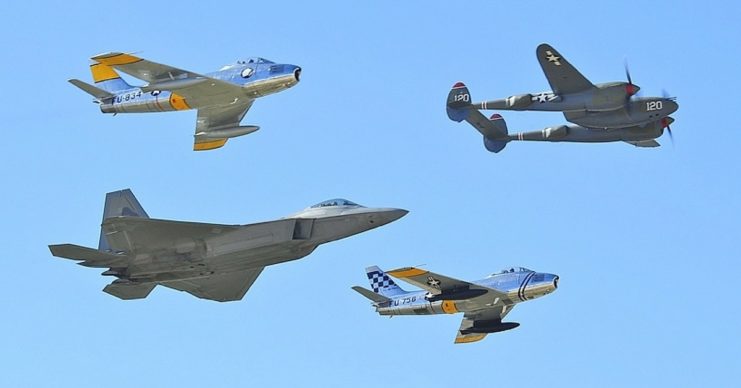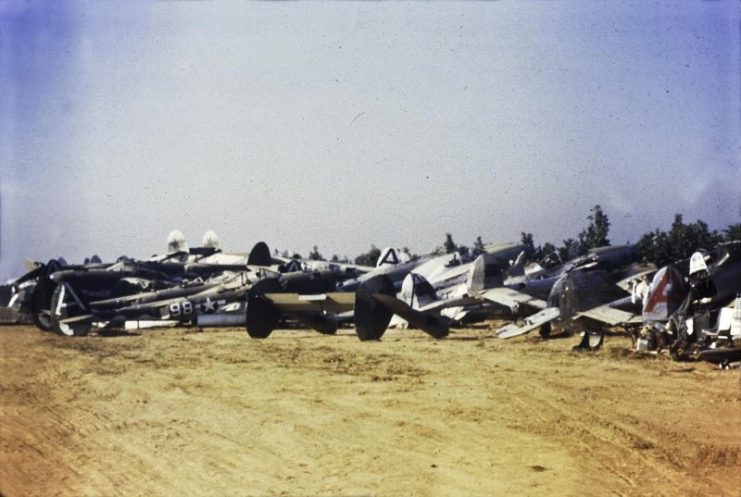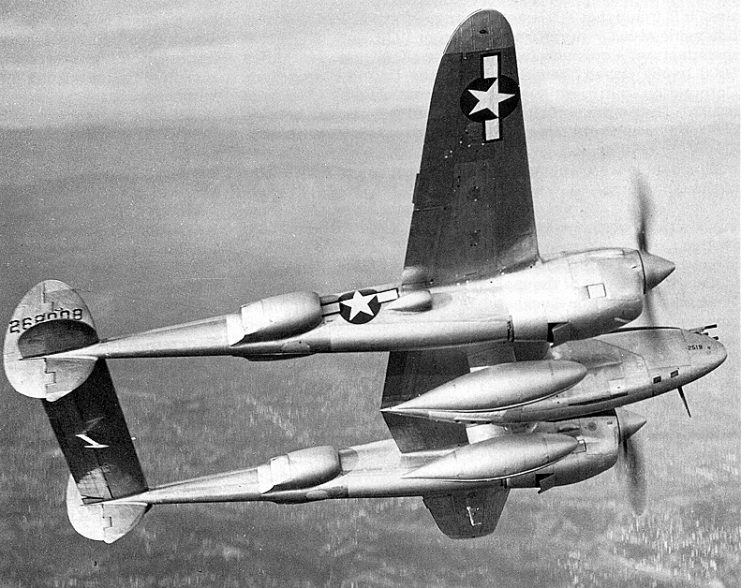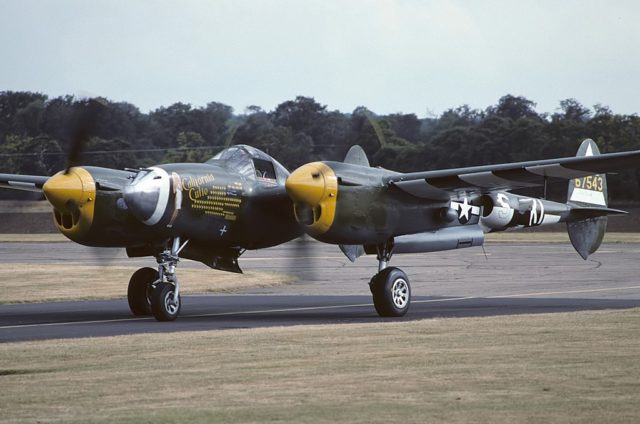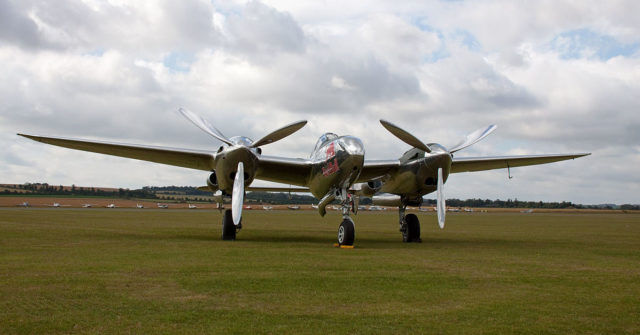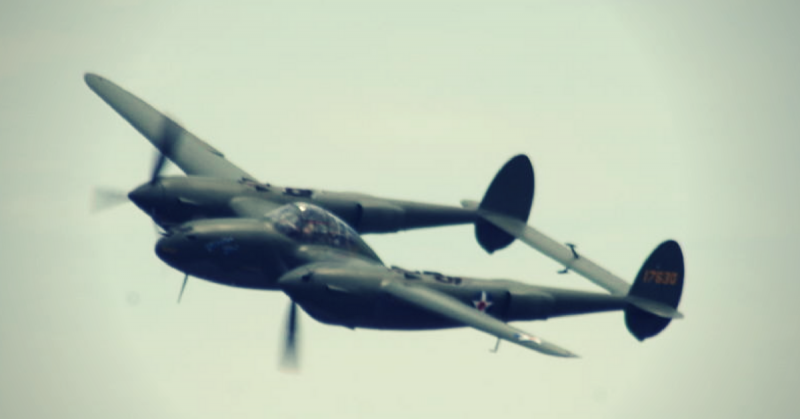The P-38 Lightning was an unusual-looking aircraft. Unlike most fighter planes of the Second World War, it had two booms, each with an engine, so that it looked almost like two planes bolted together. This unusual configuration created one of the most successful aircraft of the war and provided a great start to Lockheed’s work in military aviation.
Lockheed Goes Military
In February 1937, the United States Army Air Corps (USAAC) put out a specification for a new fighter they wanted to commission. The criteria were exacting. The USAAC wanted a long-range high-performance interceptor that could maintain a high speed at high altitude for at least an hour.
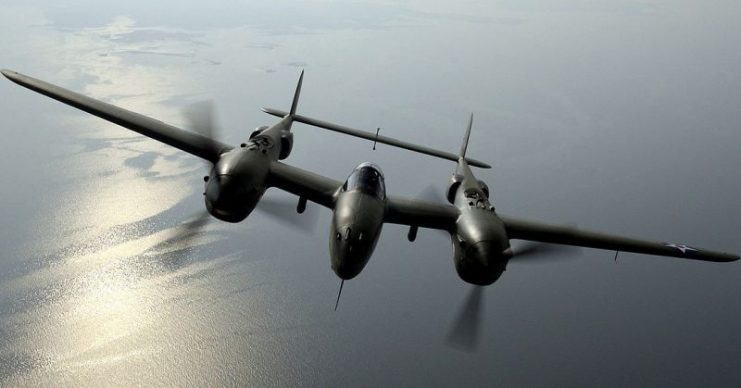
The design they eventually commissioned was created by Lockheed. It was the first time that the company had created a purely military plane and this may have influenced the design. Unfettered by the common practice of refining existing combat planes to fill new roles, they created something radical.
The P-38 was a hard-hitting machine equipped with four nose-mounted machine-guns and a cannon. It was also fast. Not long after the first test flight in January 1939, it entered the record books with the fastest transcontinental flight across the United States, which was completed in seven hours and two minutes.
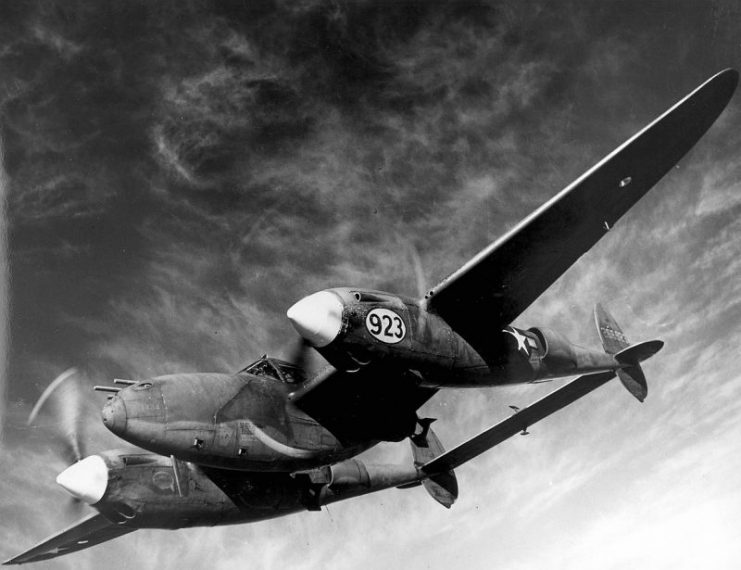
All this speed and firepower came at a cost. The P-38 was heavier not just than most fighters but than most light bombers in American service. It incorporated a large number of innovative features, Perhaps most importantly for military administrators, it was too expensive.
The P-38’s benefits outweighed its disadvantages. In August 1941, it entered service in the USAAC.
The British Lightning
In the early stages of its development, the British took an interest in buying P-38s for the Royal Air Force (RAF). The production then began on building planes to send to Britain.
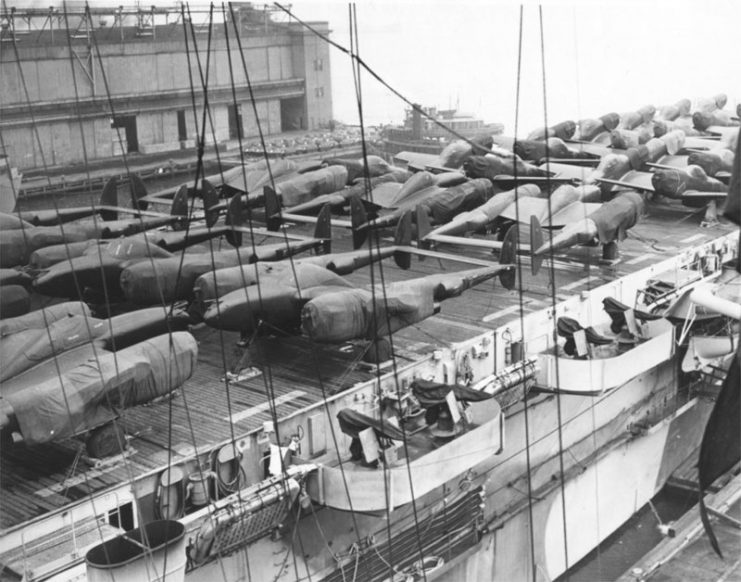
But there was a catch. The US government did not allow the export of superchargers to Europe and so the versions sent to Britain were missing this component. Without a supercharger, the P-38 was far less impressive. RAF test pilots concluded that it was underpowered and so the RAF canceled its order.
The planes being assembled for export instead went to the American armed forces. They took with them the name the British had given the plane, and which was already gaining wider traction – the Lightning.
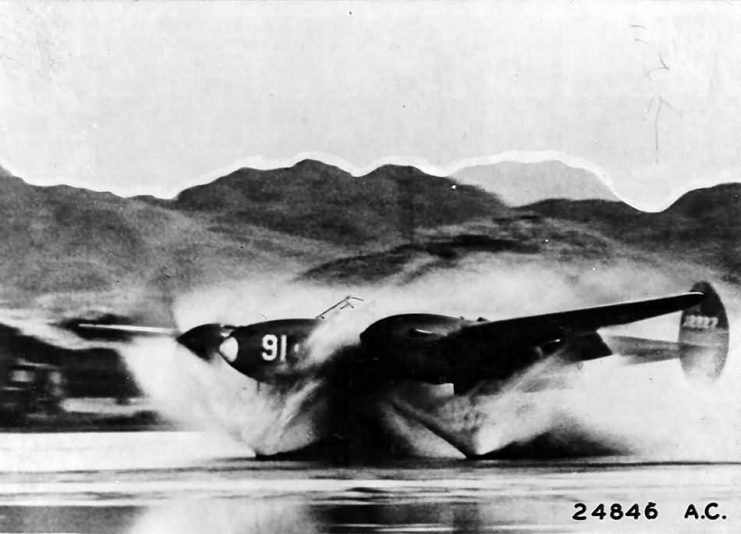
Entering the War
When America entered World War Two in December 1941, P-38s were still being evaluated and were not generally in frontline service.
Despite this, a P-38 was the first USAAF plane to destroy an enemy aircraft in the war. A P-38 based in Iceland shot down a German Focke-Wulf Condor hours after the declaration of war.
The P-38 was widely deployed in every theatre where American forces fought. The Germans nicknamed it the fork-tailed devil thanks to its deadly combination of heavy firepower and high-performance flight.
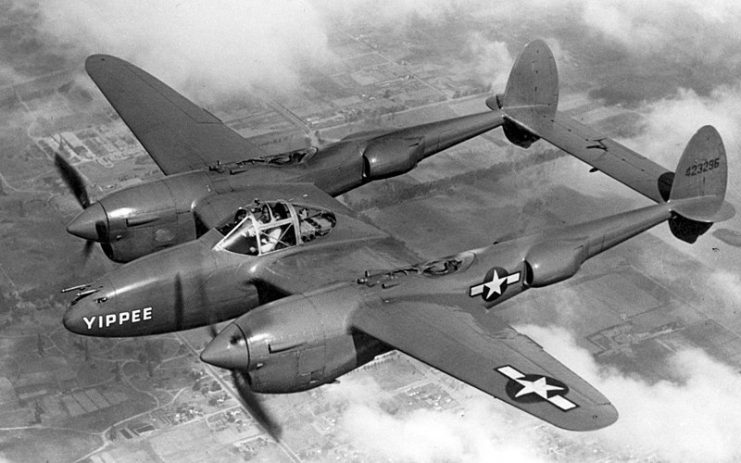
War at a Distance
During 1942-3, many fighter squadrons in the Pacific were equipped with the then-current version of the P-38, the P-38E. Across the course of the war, 27 squadrons in the Pacific were equipped with the P-38, which proved to be one of the best weapons in that theater.
With its long range, the P-38 was perfect for the long-range naval battles and aerial skirmishes of the Pacific war. P-38s destroyed more enemy planes than any other fighter in the Allied arsenal. Major Richard Bong, the greatest American air ace of the war, shot down 40 Japanese planes while flying P-38s.
It was in the Pacific that P-38s carried out their most famous mission – the shooting down of a plane carrying Admiral Yamamoto, commander-in-chief of the Japanese navy. The mission was carried out by P-38s of the 339th Fighter Squadron.
Flying from Guadalcanal, they used drop tanks to give them extra range to intercept Yamamoto far from where he would have expected American forces to be. Yamamoto’s death was a serious blow to Japanese morale and leadership, a great success for the P-38.
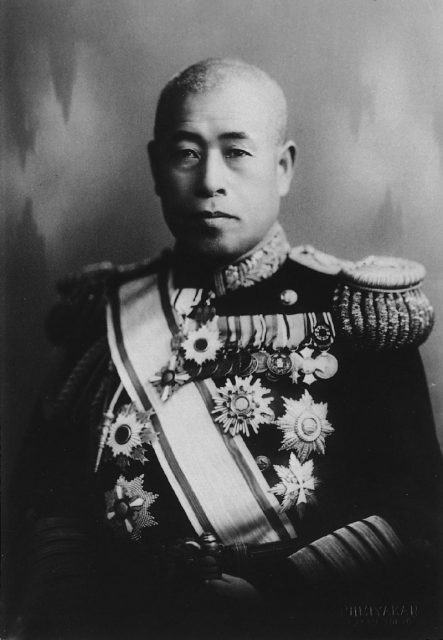
Model J
The P-38’s excellent performance led to the development of new models. The F-4 and F-5 were reconnaissance planes equipped with cameras instead of guns, using their speed and range to gather information on enemy positions.
The most notable version was the P-38J. New airscrews (propellers) gave it improved high-altitude speed and climb. It had more space for fuel and when equipped with drop tanks could reach a range of 2300 miles – enough to fly from British airbases into the heart of Germany, fight enemy planes, and return.
The model J had a top speed of 414mph in normal conditions. In a combat dive, this rose to over 550mph. The plane became hard to control at such high speeds and so a new control system was introduced. One of the earliest examples of power-assisted controls, this used hydraulics to help the pilot manage his plane.
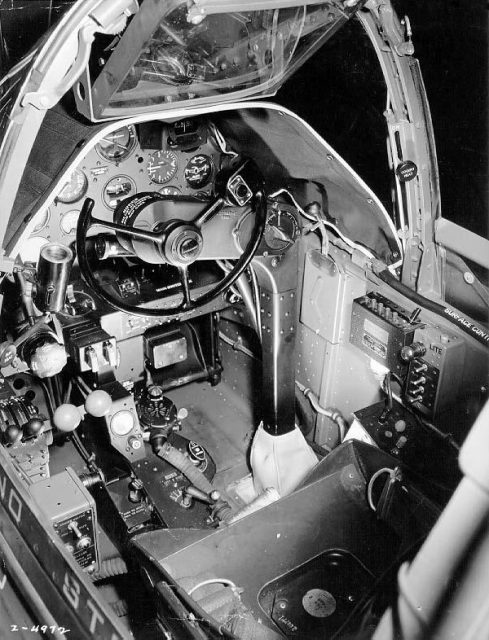
Becoming a Bomber
As the war progressed, tactics changed, technology developed, and new planes entered the war. Though the P-38 remained in action throughout, its original role as an interceptor was usurped in Europe by the Republic P-47 Thunderbolt and the North America P-51 Mustang. In that theater, the P-38 took on new tasks.
As Allied ground forces invaded Europe through Sicily and Normandy, air power in the region was increasingly used in tactical and ground-attack roles, to support the advance of ground troops. The P-38 was used in this role, bombing and strafing German armies.
Its great range and high-altitude performance also made the P-38 useful as a strategic bomber. Several model Js were provided with an extra seat to carry a bombardier and a Norden bombsight. These planes led fleets of P-38 Lightnings on precision bombing missions that brought destruction down on the German war machine.
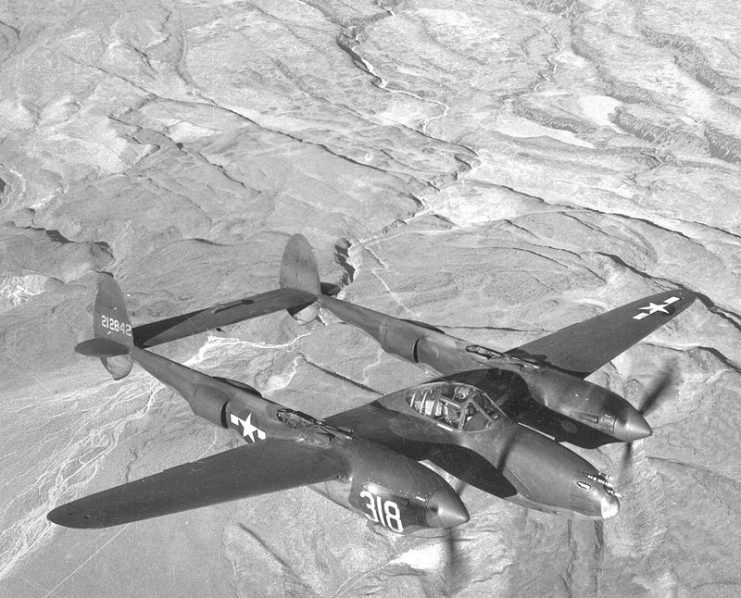
Fighting around the world and in various roles, the P-38 proved a powerful plane and one of the most effective American weapons of World War Two.
